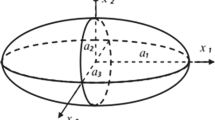Abstract
The addition of conductive filler in a polymer matrix is an effective way to increase the thermal conductivity of the plastic materials, as required by several industrial applications. All quantitative models for the thermal conductivity of heterogeneous media fail for heavily filled composites. The percolation theory allows good qualitative predictions, thus selecting a range for some qualitative effects on the thermal conductivity, and providing a way to choose a range for some experimental parameters. The design of such composite materials requires a study of its thermal features combined with different mechanical, ecological, safety, technical, and economical restrictions. A specific small guarded hot plate device with an active guard, conductive grease layer, and controlled variable pressure was used for measurement of the transverse thermal conductivity on 15 mm sided samples of composite parts. Extensive thermal and composition measurements on filled thermoplastics show that the conductivity of the filler, its size and shape, and its local amount are, with the degree of previous mixing, the main factors determining the effective conductivity of composites. For injection-molded polybutylene terephtalate plates, the best filler is the short aluminum fiber. With fibers of 0.10 mm diameter, it is possible to obtain conductivities larger by factors of 2, 6, and 10 than those of polymer for aluminum contents of 20, 42, and 43.5 vol%, respectively.
Similar content being viewed by others
REFERENCES
N. Uvarov, Proc. 3rd Int. Symp. Ionic & Mixed Conducting Ceramics, T. Ramanarayanan, ed., Electrochemical Soc. 885 (1998).
V. Privalko and V. Novikov, Thermal and Electrical Conductivity of Polymer Materials, Y. Godovsky, ed. (Springer, Berlin, 1995), pp. 31–77.
D. Staicu, M. Beauvy, M. Laurent, and V. Georgenthum, Proc. Ann. Conf. Société Française de Thermique, Arcachon, France (Elsevier, Paris, 1999), pp. 405–410.
B. Nicolai and J. De Baerdemaecker, Int. J. Heat Mass Transfer 42:1513(1999).
A. Dani and A. Ogale, Compos. Sci. Technol. 57:1355(1997).
A. Eucken, Fortschcr. Gebiet Ingenieurwesen B3 353:16(1932).
Z. Hashin and J. Shtrikman, J. Appl. Phys. 33:3125(1962).
P. Phelan and R. Niemann, J. Heat Transfer 120:971(1998).
L. Nielsen, J. Appl. Polym. Sci. 17:3819(1973).
Y. Agari and T. Uno, J. Appl. Polym. Sci. 30:2225(1985).
R. Lipton and B. Vernescu, Proc. Roy. Soc. London Ser. A 452:329(1996).
B. Garnier, T. Dupuis, J. Gilles, J. P. Bardon, and F. Danes, Proc. 12th Int. Heat Transfer Conf., Grenoble (Elsevier, 2002), Vol. 4, p. 9.
Author information
Authors and Affiliations
Rights and permissions
About this article
Cite this article
Danes, F., Garnier, B. & Dupuis, T. Predicting, Measuring, and Tailoring the Transverse Thermal Conductivity of Composites from Polymer Matrix and Metal Filler. International Journal of Thermophysics 24, 771–784 (2003). https://doi.org/10.1023/A:1024096401779
Issue Date:
DOI: https://doi.org/10.1023/A:1024096401779




